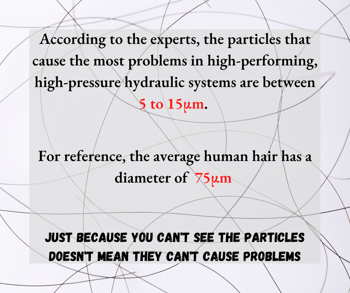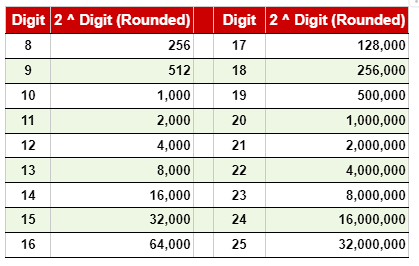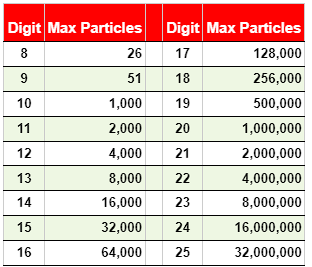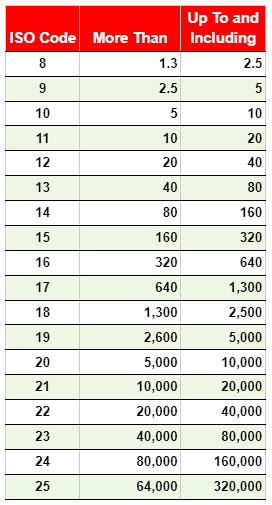Your compact equipment and final drives depend on the smooth flow of hydraulic fluid to transmit power and control motion. However, the presence of contaminants in the hydraulic fluid can adversely affect not just system performance but its longevity as well. And that is where ISO 4406 comes into play.

In this Shop Talk Blog post, you’ll learn why cleanliness codes should be important to you, followed by what the ISO 4406 digit codes represent.
Here are a few other Shop Talk Blog posts you might find helpful ...
- Results of Hydraulic Contamination
- 8 Reasons Why You Shouldn't Ignore Your Hydraulic Motor
- Of Turkeys and Bobcats
What is ISO 4406?
ISO 4406 is an international standard established by the International Organization for Standardization (ISO). It defines a code for classifying the level of contamination in hydraulic fluids. This code provides a standardized method for measuring and expressing the number and size of particles present in hydraulic fluid. If you’re curious about its contents, here’s a link to an older version: ISO-4406-1999.
Particle Contamination in Hydraulic Fluids
Particle contamination refers to solid particles or other impurities in the fluid. Larger particles can cause wear and damage to hydraulic components, reducing efficiency, increasing noise, and eventual failure. Smaller particles, while less likely to cause immediate damage, still contribute to accelerated wear and reduced system lifespan -- they often cannot be seen by the naked eye.

The cleanliness of your hydraulic fluid can be assessed through fluid analysis, which includes a particle count that tells you about the size and number of particles using the ISO 4406 code. That same code can also serve as a target when improving and maintaining the cleanliness of your hydraulic fluid.
Why ISO 4406 Cleanliness Codes Are Important to You
The ISO 4406 cleanliness code provides valuable information about the contamination level of your hydraulic fluid. This helps you extend the useful life of your system and the components within (like your final drive motor and pumps) while helping you optimize equipment performance.
For example, ISO 4406 cleanliness codes help you assess the suitability of hydraulic fluid for specific applications. Different hydraulic systems have varying cleanliness requirements, and modern machines are more susceptible to damage from particle contamination.

Fluid analysis and the codes also help you monitor fluid cleanliness over time to track changes in contamination levels. Watching the changes in contamination levels enables you to address issues before they become catastrophic to your system and your final drive motors.
Cleanliness significantly impacts the useful life and productivity of your equipment. Because of this, it can be beneficial to establish and maintain fluid cleanliness targets based on equipment specifications and operating conditions. The ISO 4406 cleanliness codes are a great tool in accomplishing this.
Basics of the ISO 4406 Codes
Now let's take a look at the basics ...
ISO Digits
The particle count related to an ISO digit is represented in terms of the factor 2 and, when divided by 100, represents the maximum number of particles found in 1 ml of hydraulic fluid. I know that sounds a bit confusing, so here’s an excellent table to help us understand this:
Table 1. ISO Digits and Factors of 2

So 15 is approximately 2^15, which gives us 32,000 when rounded. 21 gives 2,000,000 when rounded. But that still isn’t what the digit represents. We have to do a little bit more math.
To get the actual particle count associated with a digit, we need to divide the number by 100. So here’s the maximum particle counts related to the digits:
Table 2. Maximum Number of Particles Associated with ISO Digits

If your oil analysis comes back with 9 for particles with a maximum size of 4 microns, then you would look up 9. Nine corresponds to 512. To get the actual particle count, you would divide 512 by 100 to get 5.12, approximately equal to 5 particles. This means that your hydraulic fluid has no more than five particles with a size of 14 microns.
3 Digit Iso Code
Three digits represent a complete particle count.
- The first digit corresponds to maximum particles larger than 4 microns.
- The second digit corresponds to ultimate particles larger than 6 microns.
- The third digit corresponds to the maximum number of particles larger than 14 microns.
Here’s a table to help you understand how this works.
Table 3. ISO Code and Associated ppm (parts per million)

Consider this code 16/14/11, generally recognized as a good ISO value for fresh hydraulic fluid. Referring to our table, we see that …
- There are up to 640 particles in 1 ml of fluid that are 4 microns or less
- There are up to 160 particles in 1 ml of fluid that are 6 microns or less
- There are up to 20 particles in 1 ml of fluid that are 14 microns or less
Conclusion
ISO 4406 plays a crucial role in maintaining the cleanliness and integrity of hydraulic fluids, ensuring optimal performance and longevity of hydraulic systems. By understanding the ISO cleanliness code and implementing effective fluid contamination control measures, equipment operators can safeguard their hydraulic systems against costly downtime and premature failure.


